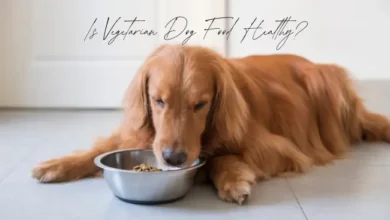Can Dogs Eat Butternut Squash? 10 Critical Facts to Know

Can Dogs Eat Butternut Squash? This question often pops up among pet owners looking for healthy and safe food options for their furry friends. The good news is that butternut squash is generally safe for dogs when served properly and can even offer some great nutritional benefits. Packed with essential vitamins, fiber, and antioxidants, this dog-friendly vegetable can support your pet’s digestion and overall health. However, like with any new food, it’s important to understand how to prepare it safely and know the best serving practices.
In this article, we’ll explore 10 critical facts you need to know about feeding butternut squash to your dog, helping you make informed choices for your pet’s nutrition and well-being.
10 Critical Facts About Dogs and Butternut Squash
Can Dogs Eat Butternut Squash? If you’ve ever wondered, “Is butternut squash safe for dogs?”, the good news is yes—but with a little important caution. Let’s dive into why cooked butternut squash can be a healthy treat for your furry friend.
Butternut Squash Is Safe for Dogs When Cooked
Butternut squash is packed with vitamins and fiber, making it a tasty and nutritious snack. However, it’s important to remember:
- Cooked, not raw: Raw squash is hard to digest and can upset your dog’s stomach. Cooking softens the squash, making it easier to eat and safer for digestion.
- Plain is best: Avoid adding salt, spices, or oils. Your dog doesn’t need those extras, and some seasonings can even be harmful.
- Serve in small pieces: Cut the cooked squash into bite-sized chunks to prevent choking.
Why Cooked Butternut Squash?
Cooking breaks down tough fibers and removes any potential toxins found in raw vegetables. This helps your dog absorb the nutrients without any tummy trouble. Plus, cooked squash has a sweeter flavor that many dogs enjoy!
A Healthy Treat Option
Next time you’re prepping dinner, consider saving a bit of cooked butternut squash for your pup. It’s a wonderful natural snack that supports digestion and offers vitamins like A and C.
Remember, whenever you introduce a new food, start with small amounts and watch for any reactions. When done right, butternut squash can be a safe and tasty treat to add variety to your dog’s diet!
Fact 2: Rich in Essential Nutrients for Dogs
Butternut squash is more than just a tasty treat—it’s packed with important nutrients that can really benefit your dog’s health. Here’s why adding a little butternut squash to your pup’s diet can be a great idea:
- Vitamins A, C, E, and K
These vitamins support your dog’s immune system, vision, skin, and overall health. For example, vitamin A helps keep their eyes sharp and vitamin E acts as a powerful antioxidant. - Potassium
Potassium is key for muscle function and heart health. It helps your dog stay active and happy. - Fiber
Fiber is great for digestion. It can help keep your dog’s tummy happy and regulate bowel movements, especially if they have sensitive stomachs. - Antioxidants
Antioxidants fight harmful free radicals in the body, which can help protect your dog from illness as they age.
In short, butternut squash isn’t just a yummy snack—it’s a nutritious boost full of vitamins and minerals. Just remember to cook it plain, without spices or added salt, to keep it safe for your furry friend.
Fact 3: Must Remove Seeds and Skin Before Serving
When it comes to feeding your dog butternut squash, preparation is key. Before you offer this tasty veggie, make sure to remove all the seeds and the tough skin. Here’s why:
Why Remove Seeds and Skin?
- Choking hazards: Seeds and skin can get stuck in your dog’s throat, causing discomfort or even choking.
- Digestive issues: The skin is hard to digest and may upset your dog’s stomach, leading to vomiting or diarrhea.
How to Prepare Butternut Squash for Dogs
- Peel off the skin completely with a vegetable peeler or knife.
- Cut the squash in half and scoop out all seeds and stringy bits.
- Cook the squash by steaming, boiling, or baking until soft.
- Let it cool before serving a small portion to your dog.
Taking these simple steps will keep your furry friend safe and make butternut squash a healthy, enjoyable treat!
Fact 4: Excellent for Digestive Health
Butternut squash is a great treat for your dog’s tummy. Its high fiber content helps keep digestion smooth and regular.
Here’s why it’s good for your dog’s digestion:
- High Fiber Helps Digestion: Fiber moves food through the digestive system, reducing upset stomach and promoting healthy digestion.
- Relieves Constipation: If your dog ever struggles with constipation, a little cooked butternut squash can help get things moving again.
- Supports Weight Management: Fiber keeps dogs feeling full longer, which can help prevent overeating and support a healthy weight.
Adding small amounts of cooked, plain butternut squash to your dog’s meals can be a tasty way to support their digestive health! Just be sure to avoid any seasoning or additives.
Fact 5: Low-Calorie Treat for Overweight Dogs
If your dog needs to shed a few pounds, butternut squash can be a great option. It’s a tasty, low-calorie treat that can help with weight management. Here’s why butternut squash works well:
- Low in calories: Allows your dog to enjoy a snack without adding too many extra calories.
- High in fiber: Helps your dog feel full longer, which can reduce overeating.
- Rich in nutrients: Provides vitamins and minerals that support your dog’s overall health without the guilt of unhealthy snacks.
Next time your furry friend begs for a treat, try offering a small piece of cooked butternut squash. It’s a wholesome way to satisfy their cravings while keeping their weight in check!
Fact 6: Can Puppies Eat Butternut Squash?
Good news for puppy parents—yes, puppies can eat butternut squash! This tasty vegetable is packed with vitamins and fiber, making it a healthy treat or meal addition for your growing fur baby. But, like anything new, it’s important to serve it the right way and in the right amount.
Age-Appropriate Serving Sizes for Puppies
When it comes to feeding butternut squash to puppies, keep these simple tips in mind:
- Start small: Begin with a teaspoon or two for very young puppies to make sure their tummy handles it well.
- Adjust with age: As your puppy grows, you can increase the portion to a tablespoon or more.
- Moderation is key: Butternut squash should be a treat or mix-in, not a main meal. Too much can cause an upset stomach or diarrhea.
- Cooked and plain: Serve it cooked (steamed or baked) without salt, spices, or butter for easy digestion.
By offering butternut squash in age-appropriate amounts, you provide a healthy snack that supports your puppy’s growth and digestion. Just remember to watch for any signs of tummy trouble and chat with your vet if you’re unsure!
Fact 7: Allergic Reactions Are Rare But Possible
Butternut squash is generally safe and healthy for dogs. However, like with any new food, some dogs may have allergies or sensitivities. It’s important to keep an eye on your furry friend when introducing butternut squash to their diet.
Signs to Watch For
If your dog is allergic or sensitive to butternut squash, you might notice:
- Itchy skin or excessive scratching
- Red, inflamed patches on the skin
- Swelling around the face, ears, or paws
- Vomiting or diarrhea
- Excessive licking or shaking of the head
If you see any of these signs after your dog eats butternut squash, stop feeding it and contact your vet.
Fact 8: Proper Serving Sizes and Frequency
Giving butternut squash to your dog can be a healthy treat, but like anything new, moderation is key. Too much squash at once might upset your dog’s stomach, so it’s important to serve the right amount.
How much butternut squash can dogs eat?
- Small dogs: About 1 to 2 tablespoons of cooked, plain butternut squash per serving.
- Medium dogs: 2 to 4 tablespoons per serving.
- Large dogs: Up to ½ cup per serving.
How often can you give butternut squash?
- Treat butternut squash as a snack or supplement, not a full meal.
- Offer it 2 to 3 times a week to avoid digestive issues.
- Always start with a small amount to see how your dog reacts.
Remember, every dog is different. If your pup shows any signs of stomach upset, slow down or stop feeding squash. When served right, butternut squash can be a tasty, nutritious addition to your dog’s diet!
Fact 9: Best Cooking Methods for Dogs
When it comes to feeding butternut squash to your furry friend, how you cook it matters. Proper cooking makes it easier for your dog to digest and enjoy.
Safe Cooking Techniques:
- Steaming: This method keeps most nutrients intact and softens the squash perfectly.
- Boiling: Simple and effective, boiling makes the squash tender without adding anything extra.
- Baking: Baking brings out a natural sweetness while softening the squash, but avoids roasting with oils or spices.
Important Tips:
- Skip all seasonings and additives. Your dog’s tummy is sensitive to salt, garlic, onions, and spices, which can cause upset or be toxic.
- Serve plain and cool. Let the squash cool down before offering it to your dog to avoid burns.
By sticking to these simple cooking methods, you ensure your pup gets a healthy, tasty treat that’s easy on their digestive system!
Fact 10: Signs of Overconsumption or Intolerance
Butternut squash is generally safe and healthy for dogs. However, like with any new food, too much or an intolerance can cause problems. It’s important to watch your dog closely after feeding butternut squash.
Digestive Upset Symptoms to Watch For:
- Vomiting
- Diarrhea or loose stools
- Gas or bloating
- Stomach cramps or discomfort
- Loss of appetite
If your dog shows any of these signs after eating butternut squash, it could mean they ate too much or cannot tolerate it well.
When to Contact a Veterinarian:
- Symptoms last more than 24 hours
- Severe vomiting or diarrhea
- Signs of pain or distress
- Loss of energy or unusual behavior
Your vet can help decide the right treatment and whether your dog needs to avoid butternut squash or other foods. Always introduce new foods slowly and in small amounts to keep your furry friend happy and healthy!
How to Safely Prepare Butternut Squash for Your Dog
Butternut squash is a tasty and healthy treat for dogs! It’s rich in vitamins, fiber, and antioxidants that can help support your furry friend’s digestion and immune system. But before you share this yummy veggie, it’s important to prepare it safely.
Here’s a simple, step-by-step guide on how to prepare butternut squash for dogs:
Step-by-Step Preparation Guide
- Choose Fresh Butternut Squash
Pick a firm squash with no soft spots or mold. Freshness matters for taste and safety. - Wash Thoroughly
Rinse the squash under cold water to remove any dirt or pesticides from the skin. - Peel the Squash
Use a vegetable peeler or knife to remove the tough outer skin. Dogs can’t digest the skin easily, and it might cause stomach upset. - Cut into Small Pieces
Slice the peeled squash into small cubes or chunks. Smaller pieces cook faster and are easier for dogs to eat. - Cook the Squash
- Boil, steam, or bake until soft.
- Avoid adding salt, butter, oil, or spices. Plain cooked squash is best for dogs.
Cooking helps break down tough fibers to make it easy on your dog’s tummy.
- Let it Cool
Make sure the squash is completely cool before offering it to your dog to avoid burns. - Serve in Small Amounts
Start with a small portion to see how your dog reacts. Some dogs may be sensitive or allergic to new foods.
Bonus: A Simple Butternut Squash Dog Recipe
- 1 cup cooked butternut squash (mashed or cubed)
- Mix with your dog’s regular food or serve as a treat
Enjoy watching your dog nibble on this delicious, nutritious snack!
By prepping butternut squash safely, you can share a healthy bite that your dog will love. Just remember: always introduce new foods slowly, and if you notice any digestive issues, check with your vet. Happy cooking!
Butternut Squash vs. Other Squashes for Dogs
Can Dogs Eat Butternut Squash? Yes, dogs can safely eat butternut squash in moderation. It’s a tasty and nutritious veggie that many dogs enjoy. Butternut squash is packed with vitamins like A and C, fiber, and antioxidants that help support your dog’s health.
When it comes to feeding squash to your furry friend, not all types are the same. Here’s a quick look at how butternut squash stacks up against pumpkin and acorn squash:
- Butternut Squash:
- Sweet, mild flavor most dogs love
- Rich in vitamins A, C, potassium, and fiber
- Helps support digestion and immune health
- Pumpkin:
- Often called the “gold standard” for dog-friendly squash
- Great for digestion and firming up stools
- Very easy to find canned or fresh
- Acorn Squash:
- Also safe but harder to digest due to stringy texture
- Still nutritious but not as popular with dogs
- Should be cooked and peeled well
Which Squash Is Best for Dogs?
If you’re wondering “What’s the best squash for dogs?”, pumpkin and butternut squash are the top picks. Pumpkin often takes the lead because it’s easier to digest and widely available. Butternut squash is a great alternative if you want to mix up your dog’s diet.
When to Avoid Giving Butternut Squash to Dogs
Can Dogs Eat Butternut Squash? Butternut squash is a tasty and nutritious veggie that many dog owners consider adding to their furry friend’s diet. It’s packed with vitamins, fiber, and antioxidants, which can support your dog’s digestion and immune health. But like any treat, it’s important to know when to be careful.
Even though butternut squash is generally safe, there are times you should avoid feeding it to your dog:
- Allergies or Food Sensitivities: If your dog has never eaten squash before, introduce it slowly. Watch for signs like itching, swelling, or tummy upset.
- Diabetes or Weight Issues: Squash has natural sugars. Too much can affect blood sugar levels or add unwanted calories.
- Digestive Problems: Dogs with sensitive stomachs or chronic diarrhea might react poorly to the fiber in squash.
- Puppies or Senior Dogs: Their digestion can be more delicate, so consult your vet before adding new foods.
Health Conditions and Contraindications
Some health concerns mean you should skip butternut squash or check with your vet first:
- Pancreatitis or a history of pancreatitis
- Kidney or liver problems
- Allergies to other squashes or similar vegetables
- Dogs on strict vet-prescribed diets
Conclusion
Butternut squash can be a healthy treat if prepared and served correctly. Always cook it—steamed or boiled without salt, spices, or oils—and peel it to avoid choking hazards. Remove seeds before giving it to your dog. Start with small amounts to see how your dog’s body reacts. Remember, every dog is unique, and what works for one might not work for another. To keep your pup happy and healthy, always consult your veterinarian about your dog’s specific dietary needs.
FAQ
Can dogs eat butternut squash safely?
Yes, dogs can safely eat cooked butternut squash. It is full of fiber, vitamins, and minerals that support digestion and overall health. Always remove the skin and seeds before feeding. Serve it plain, without butter, oil, or seasonings.
Is raw butternut squash safe for dogs?
No, raw butternut squash is hard to chew and digest for dogs. It may cause stomach upset or choking. Always cook the squash until it’s soft before feeding. Steaming, boiling, or roasting plain is the best way to prepare it.
Can butternut squash help a dog’s digestion?
Yes, butternut squash is high in fiber, which helps dogs with healthy digestion. It can also relieve mild constipation. Always serve in small amounts to avoid stomach upset, and mix it with their regular food for best results.
How much butternut squash can a dog eat?
Small dogs can have about one to two tablespoons, while larger dogs can enjoy up to half a cup. Always start with a small portion to check for sensitivities, and never make squash more than 10% of their daily diet.
Are there risks of feeding dogs too much butternut squash?
Yes, too much squash may cause diarrhea, gas, or stomach discomfort in dogs. Overfeeding also adds unnecessary calories. Always serve it in moderation as a treat or food topper, not as a meal replacement. Balance is key for safety.



